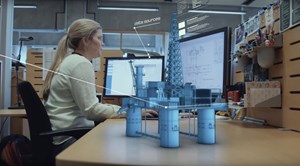TechnipFMC, DNV GL partner to benchmark digital twin methodologies
OSLO - TechnipFMC and DNV GL have entered into a partnership to develop the oil and gas industry’s first methodology for qualifying the integrity of digital twin technology.
The methodology aims to bring a level playing field to the sector’s varying technical definitions of, and expectations towards digital twins. It will set a benchmark for oil and gas operators, supply chain partners and regulators to establish trust in digital twin-generated data for performance and safety decision-making in projects and operations.
Digital twins, a digital representation of a physical asset and its behavior, have the potential to rapidly emerge as the foundation for asset design and operation across the oil and gas value chain. Oil and gas companies are increasingly using the technology to bring asset information from multiple sources together in a single and secure place and connecting 3D models with real time field data during operation phase. Through digital twins, operators will also be able to get more insights and simulate the behavior of the asset depending on operational conditions to facilitate the decision-making.
“Digital twin technology results in quicker, better asset design, improved project delivery efficiency, and operation safety and performance during the whole asset life. As more digital twins enter the oil and gas sector, it is key for operators to know that their twin works as planned, and that its output is reliable. Our collaboration with DNV GL aims to address this,” said Julie Cranga, Vice President, Subsea Digital, TechnipFMC.
The new methodology will be built upon DNV GL’s Recommended Practice (RP) for Technology Qualification: DNVGL-RP-A203. The RP was first published more than 20 years ago to provide a common framework for the oil and gas industry players to gain acceptance for implementing unproven hardware technology. It has since been used to demonstrate the trustworthiness of hundreds of technologies globally.
“The major challenge with implementing new digital technologies in the oil and gas industry today is the same as when novel hardware technologies were introduced two decades ago. How can you trust that it works when the technology hasn’t been used before? I’m delighted that a team of domain and digital experts from DNV GL and TechnipFMC are collaborating to tackle a wide range of issues – from definitions to data quality and algorithm performance – to enable faster implementation of digital twins in our sector,” said Liv A. Hovem, CEO, DNV GL – Oil & Gas.
The digital twin technology qualification methodology will be piloted on a subsea field development project delivered by TechnipFMC starting early 2020. It is expected to be published as a recommended practice during the second half of next year.



